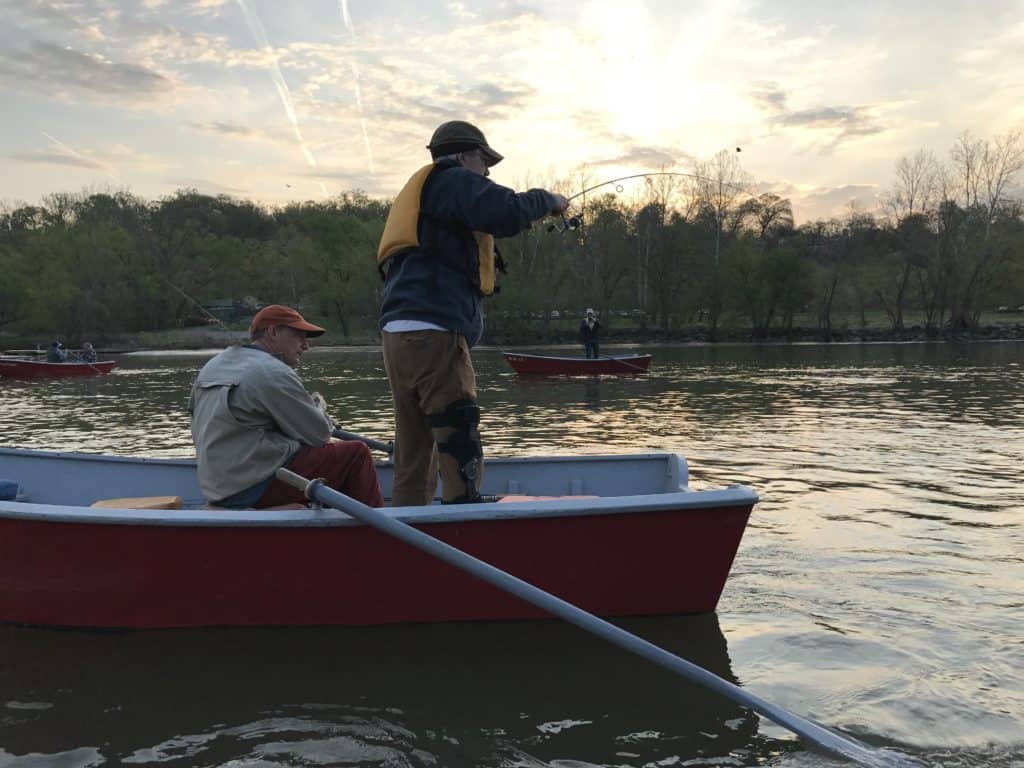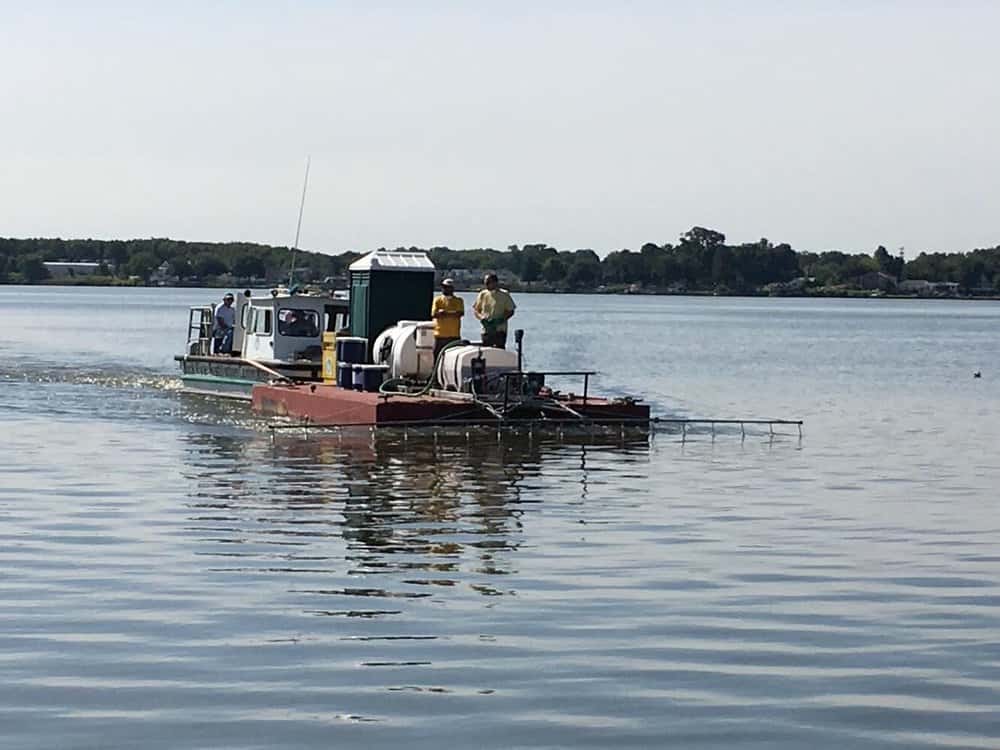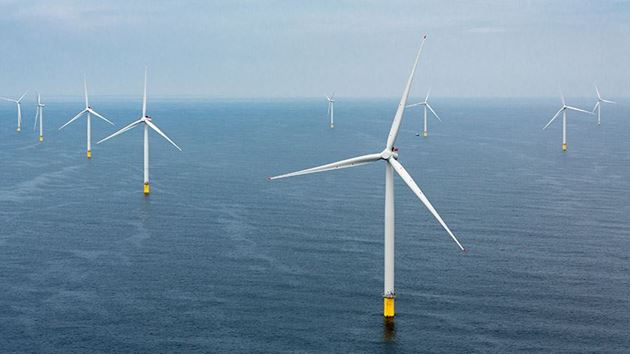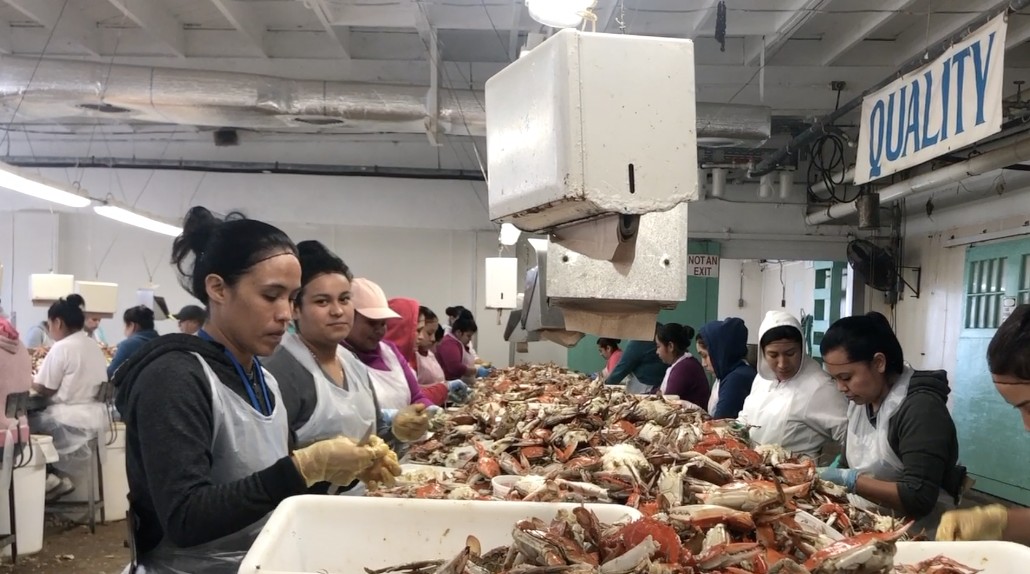Near the heart of Annapolis, a boatbuilder is reinventing a craft that uses no sails. The boat’s power comes from two strong arms, and the occasional small outboard motor.
Reid Bandy is known for building high performance powerboats in his shop at the Casa Rio boatyard on the Rhode River. Lately though, he’s been building rowboats.
Not just your average everyday rowboats, these boats are part of a new fleet destined for the historic Fletcher’s Boathouse along the Potomac River on the C&O Canal, just outside Washington, D.C.
The red, 14-foot rowboats are an iconic part of this popular fishing destination, downstream of Little Falls on the Potomac River. For over 50 years, the rowboats have been the preferred means of fishing and floating for politicians, judges and even presidents who have come to escape the hustle and bustle inside the Beltway.
Before the project began, Bandy had never heard of Fletcher’s Cove. Yet his friend Karl Bieberich had. Bieberich, who owns Chesapeake Dock Outfitters in Annapolis, had just built and delivered floating docks for Fletchers Cove.
“Karl calls me and says, ‘Reid, there’s a guy I’d like you to meet. His name is Mike Bailey,’” says Bandy.
In 2014, when Fletchers Cove became severely silted in and river access was closed, a group of concerned citizens came together to create the Friends of Fletchers Cove. They began looking for ways to restore the place and bring the river back to its natural course after decades of heavy silt and erosion. Bailey is their outspoken and passionate spokesperson.
“In the 1960s, fill deposited from local infrastructure projects created an impediment on the river and prevented natural sediment flushing. It has required regular excavation of the sediment build-up,” says Bailey.
The nonprofit put together a $26 million multi-phase effort to restore the site. Soil and sediment sampling has been completed, and the docks that were damaged due to flooding in 2018 have been replaced by Bieberich. Next, Bailey set his sights on the rowboats.
The wooden rowboats require a lot of upkeep, needing to be repainted and repaired nearly every year. It’s a costly bit of maintenance for the concessionaires who manage the boathouse. So Bailey started looking for a way to make the boats last longer. That’s when he invited Bandy to visit Fletchers.
“I had never been there before,” said Bandy. “I didn’t even know it existed. It’s a beautiful place–quite captivating.”
Bandy was impressed by the site and its popularity. “Then Mike starts talking with such fondness for these rowboats, how they handle, how they float, how they drift. I knew I wanted to try to help him.”
Bandy knew he could make the boats lighter, and more durable. “Weight is everything in boat-building,” he says.
Bandy built three prototype boats to present to Bailey—two made in the traditional style, built of marine plywood reinforced with fiberglass and one crafted with a foam core encased in fiberglass. The first he made using fir plywood–much like the original boats. The second was created out of marine-grade Okoume plywood, which is lighter and more resistant to rot. The third, made of Corecell, a high-tech plastic foam core and fiberglass, weighs half the weight of the Okoume boat.
“It’s this sturdy material that looks like Styrofoam, but it’s a dense foam coated with skins, laminated skins like a web – like a sandwich – essentially an I-beam,” noted Bandy.
The boats must endure a lot of rough treatment. They are constantly being dragged through mud and they sit in the water, tied together and pulling against each other, bumping and scraping day in and day out.
“The boat I’ve designed,” says Bandy, “cuts maintenance down to one-fifth or one-tenth the time and energy they were spending to keep the boats usable.”
The unique design of the boats was not easily accessible. There are no formal plans to work from. So Bandy digitized measurements from one of the originals, which were produced in batches at various old-school boat shops on the Eastern Shore. This allowed him to have the essential panels for the boats cut on a computer-controlled machine at Chesapeake Light Craft in Annapolis. Now, his design can be replicated.
Instead of being painted in the typical “Fletcher red,” Bandy is drawing from his background in automotive painting. “I’m actually not painting the boats,” he said. “We are using a decal-a wrap-that I’ve pioneered from my time in the automotive trade. Instead of sanding and scraping paint off the boats on the banks of the river and dealing with toxic paints, we will just put a little wrap Band-Aid over any scrapes and dings the boats get during the season.”
Bailey was ecstatic during a trial float of the new rowboats. He demonstrated the “Fletcher-style” of rowing, standing up. He is excited for the future of the cove and the importance of protecting its legacy, where the powerful, famous, and regular folks can access and enjoy some undisturbed fishing time.
“You may see subsistence anglers on the shoreline, your fly anglers, the occasional guy with conventional rods,” says Bailey. “In the boats, you have anyone who can afford to rent them for the day. The nice thing about Fletchers, you can go there, fish it, and leave without being recognized – all you gotta do is wear a hat and a hoodie. The playing field is equalized there. You get no favors. It’s first come first served on these boats.”
He adds that the rowboats are usually all rented out within the first half hour during the season. “And we hope this is the rowboat of the future for Fletchers.”
-Kathy Knotts, CBM Bay Weekly




